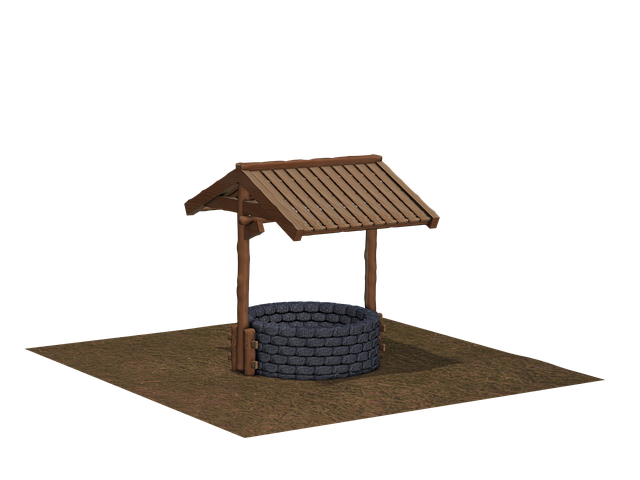Synthetic roofing is a game-changer in construction, offering durable and low-maintenance alternatives to traditional materials. These advanced materials mimic natural looks like wood shakes or slate while providing superior weather resistance and reduced fading. With UV-resistant polymers and coatings, synthetic roofs ensure structural integrity and environmental sustainability. Popular options include synthetic slate, composite shingles, and metal panels, each with unique benefits for residential and commercial use. The growing trend in synthetic roofing is driven by its durability, cost-effectiveness, and eco-friendly properties, making it a reliable and attractive choice for homeowners and businesses alike.
“Unleash the power of innovation with synthetic roofing—a revolutionary solution transforming traditional building practices. This comprehensive guide explores the cutting-edge technology behind these man-made materials, designed to mimic nature’s beauty. From enhanced durability to environmental sustainability, synthetic roofs offer a wide array of benefits. We delve into the diverse types, their applications in various industries, and the positive impact on our planet. Get ready to discover how synthetic roofing is shaping a greener future.”
- Understanding Synthetic Roofing: Unveiling the Technology
- Benefits of Using Synthetic Materials for Roofs
- Types and Applications of Synthetic Roof Products
- Environmental Impact and Future Prospects of Synthetic Roofing
Understanding Synthetic Roofing: Unveiling the Technology
The concept of synthetic roofing has revolutionized the construction industry, offering an innovative solution that seamlessly blends aesthetics and functionality. This cutting-edge technology aims to replicate the beauty and characteristics of natural materials like wood shakes, tiles, or slate while providing enhanced durability and performance. By carefully crafted processes, manufacturers transform high-quality materials into synthetic equivalents, ensuring a sustainable and low-maintenance alternative for homeowners and builders alike.
Synthetic roofing materials are designed to withstand extreme weather conditions, resist fading and cracking, and offer long-term cost savings. Their development involves advanced manufacturing techniques, incorporating elements such as UV-resistant polymers and durable coatings to mimic the natural look while maintaining superior strength. This technology not only reduces the environmental impact but also provides homeowners with the freedom to choose aesthetically pleasing options without compromising on structural integrity.
Benefits of Using Synthetic Materials for Roofs
Using synthetic materials for roofs offers a range of benefits that make them an increasingly popular choice for both residential and commercial properties. One of the key advantages is their durability; synthetic roofing can withstand extreme weather conditions, from heavy rainfall to strong winds, without succumbing to damage like natural materials might. This longevity not only reduces the need for frequent repairs but also provides peace of mind for homeowners and business owners alike.
Additionally, synthetic roofs are highly cost-effective in the long run. They often come with extensive warranties, ensuring that they remain sturdy and reliable for years. Moreover, their low maintenance requirements save time and money compared to natural materials that may require regular cleaning, sealing, or painting. This makes synthetic roofing an attractive option for those seeking a practical yet aesthetically pleasing solution for their roof needs.
Types and Applications of Synthetic Roof Products
Synthetic roof products have evolved significantly, offering a diverse range of options to mimic natural materials like asphalt, metal, and even tile. These man-made alternatives are designed to withstand harsh weather conditions, ensuring longevity and low maintenance. One popular type is synthetic slate roofing, which provides an aesthetically pleasing, durable finish similar to traditional slate but at a more affordable cost. It’s particularly suited for historic buildings aiming to retain their original charm.
Another notable synthetic roof material is composite shingles, known for their versatility and ability to mimic the look of wood or ceramic shingles. These shingles are lightweight, easy to install, and offer excellent insulation properties. They’re commonly used in residential and commercial settings due to their cost-effectiveness and low environmental impact compared to natural materials. Additionally, synthetic roofing solutions like metal panels provide superior strength and corrosion resistance, making them ideal for industrial buildings and structures in harsh environments.
Environmental Impact and Future Prospects of Synthetic Roofing
The environmental impact of synthetic roofing is a key consideration in its widespread adoption. Traditional roofing materials often contribute to significant waste and resource depletion, releasing harmful chemicals into the environment during production and disposal. In contrast, synthetic roof options are designed with sustainability in mind. These materials are typically made from recycled or renewable resources, reducing their carbon footprint and minimizing the strain on natural resources. Moreover, synthetic roofing can be more durable than natural alternatives, leading to longer-lasting installations that reduce the need for frequent replacements.
Looking ahead, the future of synthetic roofing appears promising. Advancements in material science are driving innovations that further enhance the ecological benefits and performance of these products. As consumer awareness and demand for eco-friendly solutions grow, synthetic roofing is poised to become a prominent option. Future developments may include improved recycling capabilities, enhanced aesthetic appeal, and even smarter integration with renewable energy systems. These prospects not only benefit the environment but also offer cost-effective and efficient solutions for homeowners and businesses alike.
Synthetic roofing offers a revolutionary alternative to traditional materials, combining durability with an eco-friendly approach. By mimicking natural elements, these innovative products not only enhance the aesthetics of buildings but also contribute to sustainability. As technology advances, we can expect synthetic roofing to become even more sophisticated, providing optimal performance and reduced environmental impact. This growing industry is set to transform the way we think about roofing, offering a balance between style, strength, and ecological consciousness.
